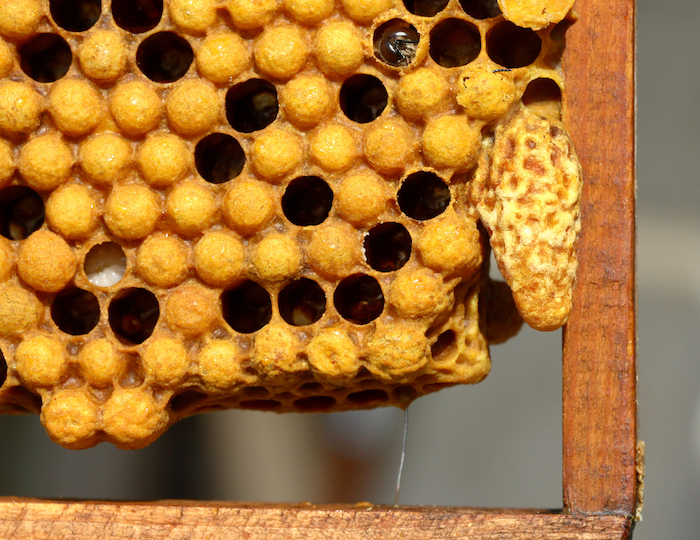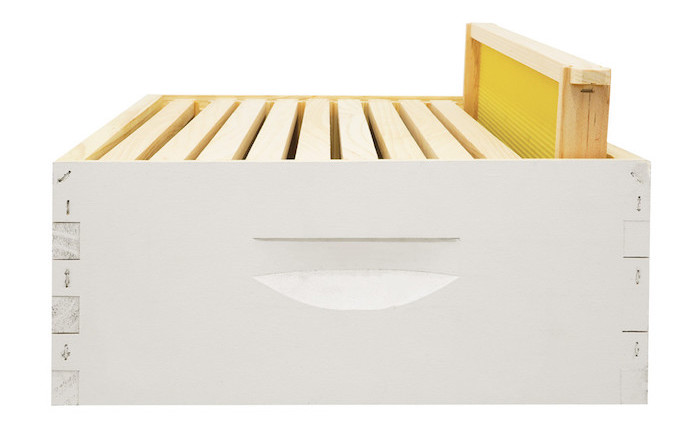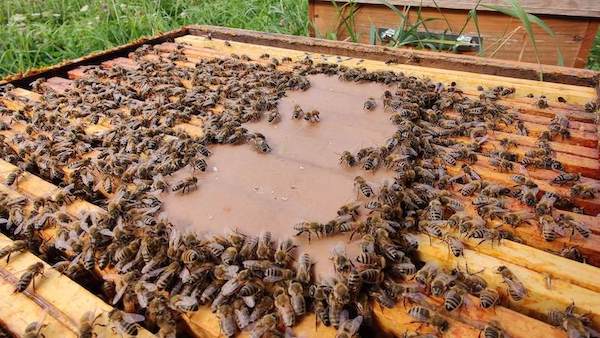 by Véto-pharma
by Véto-pharma As the temperatures rise in springtime and the days lengthen, bee colonies begin to experience a significant period of growth. During this phase, the queen steadily increases egg-laying, and worker bees mature quickly, preparing for the upcoming season of foraging and pollination.
For beekeepers, this is the moment to ensure that their colonies are prepared to thrive. One of the key aspects of successful colony management in spring is to provide sufficient space inside the hive – enough for brood rearing, food storage, and additional space for surplus honey in the form of honey supers.
Proper space management inside the hive is essential for maintaining a well-balanced and healthy colony. The brood nest, where the queen lays her eggs, needs to be adequately sized to prevent overcrowding, which can impede brood rearing and hinder the queen’s egg-laying ability.1 Without sufficient space, the colony may struggle to maintain a healthy brood population, ultimately limiting its worker bee population. This is critical, as worker bees are necessary for foraging, hive maintenance, and overall colony productivity.1-2
Simultaneously, bees require enough space to store nectar, pollen, and honey. If the brood nest becomes overcrowded with nectar, the queen may be forced to stop laying eggs, halting colony growth. When honey storage areas are filled, that ensures the survival of the colony, especially during periods of low nectar flow. However, too much honey in the wrong place – like the brood nest – can cause congestion and hinder proper brood care by nursing bees.3 If bees cannot efficiently store and access nectar and pollen, it can negatively impact their foraging efforts and the overall productivity of the hive.
The key to successful hive management lies in balancing space for brood development and food storage. Overcrowding in either area can lead to inefficiency in the hive, whether through impeded growth from insufficient brood rearing or stress from the lack of storage space for nectar.4 Furthermore, poor space management can lead to swarming if bees feel that they do not have adequate room to function effectively, resulting in the loss of valuable workforce and potential honey production.5 Properly managing hive space not only promotes healthy brood but also supports the colony’s overall growth, stability, and productivity.
The balancing of space between brood and food stores is a delicate matter. If the hive is overfilled with brood, bees may begin to build queen cells, a sign that the colony is preparing to swarm. The result is a loss of bees, which could reduce the colony’s workforce for pollination and honey production. Conversely, if there is an excess of empty space without enough brood or food stores, the colony may become inefficient. The bees will spend unnecessary energy managing space, diverting attention from other vital tasks such as foraging or hive maintenance.1
Thus, achieving the right balance in hive space is essential for maintaining a healthy, productive colony. Space should be managed dynamically, adjusting for the colony’s growth and the increasing food stores as nectar flows begin.1

An important task for beekeepers in spring is to determine when to add honey supers. A honey super is an additional box placed above the brood nest, providing the bees with extra space to store the nectar they collect. Adding a honey super at the right time ensures that the colony has enough room to store surplus nectar, without hindering the queen’s ability to continue laying eggs.4
Beekeepers should typically add a honey super when the brood nest is approximately 70% full of brood. At this point, the queen has laid enough eggs, and the worker bees will begin to store excess nectar in the available cells. If a super is not added at the right moment, the bees may begin to store nectar in the brood nest, potentially causing congestion that can lead to swarming.3
These are the key signs suggesting that it’s time to introduce a honey super to the hive:
In areas with a strong nectar flow, a single super may quickly become insufficient. As bees fill the first super, beekeepers should monitor the hive for signs that additional space is needed. Adding a second or even third super can help prevent congestion and support the growing colony.3

When adding a honey super, many beekeepers use a queen excluder. This is a grid-like barrier placed between the brood chamber and the honey super to prevent the queen from entering the super. It ensures that the super will be used solely for nectar storage, rather than brood rearing.
However, not all beekeepers use queen excluders, as some feel they can impede the bees’ movement in the hive, potentially causing congestion. The decision to use an excluder should be based on the beekeeper’s preference and the specific needs of the colony.2
While spring is a time of growth and expansion for bee colonies, it also brings unpredictable weather patterns, including the possibility of late frosts. A late frost can significantly impact nectar flow, especially from early blooming plants such as fruit trees, which are key sources of nectar in early spring. When frosts damage these early nectar sources, the bees may struggle to gather enough food, potentially leading to a shortage of honey stores.1
To mitigate the challenges posed by late frosts, beekeepers should:

Spring represents a critical time period for honey bee colonies, as they transition from the calm of winter to the vigor and growth of the foraging season. Proper hive management during this time – particularly in relation to space allocation for brood and food storage – is essential for the colony’s continued success. Timely addition of honey supers, careful monitoring of the colony’s growth, and adjustments for factors like late frosts all contribute to the overall health of the hive.
By managing hive space effectively, beekeepers can ensure their colonies are well-positioned to meet the challenges of the season. Careful management not only supports colony health but also maximizes honey production, leading to a fruitful and productive year for both the bees and the beekeeper.
 by Véto-pharma
by Véto-pharma  by Véto-pharma
by Véto-pharma References:
Join the Véto-pharma community and receive our quarterly newsletter as well as our occasional beekeeping news. You can unsubscribe at any time if our content does not suit you, and your data will never be transferred to a third party!
© 2019-2025, Véto-pharma. All rights reserved